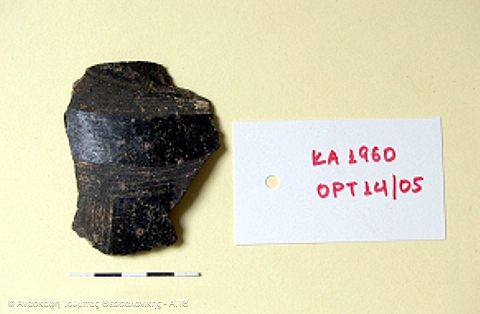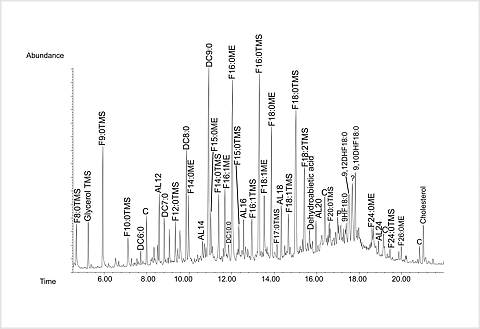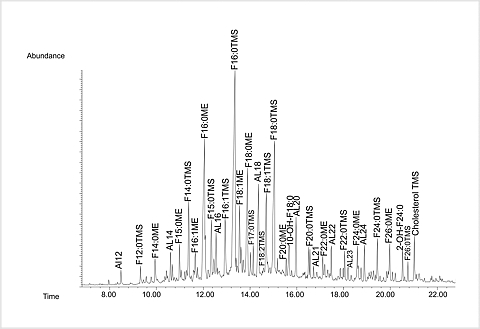Organic Substances Residues Analyses in Pottery
Organic residue analyses are gradually carried out in several categories of ceramic vases, within the framework of the study of pottery in relation to the social practices in the Toumba settlement during the Bronze Age.
These analyses are conducted by Dr. Maria Roumpou. Some examples of analyses appear below:
Investigating the consumption and exchange of vegetable oils
Recent studies in Macedonia have associated both the import and the local production of Mycenaean and Mycenaean pottery style, respectively, with practices, such as wine consumption during feasts or coating of the body with ointments or perfumed substances, with olive oil as the basic ingredient.
There has been no sign of olive tree cultivation in Northern Greece. Residues from other oil producing plants have been detected, such as flax, opium poppy or plants belonging to species Brassica and Lallemantia. These plant remains were found in recent archaeobotanical researches..
The vases connected to this activity are the kantharos-shape amphoriskos, as well as the Mycenaean style “alabastra”.
The organic substances residues analyses at Toumba aimed at investigating the use of oils in northern Greece surviving as residues on vase walls. These vases were possibly used for storage and transportation of perfumed oils or ointments.
The 26 samples examined mainly come from kantharoi, most of which featured incised decoration, and from Mycenaean style vases, possibly related to the use of aromatic substances. The samples come from vases that date back to different periods, offering the possibility to compare practices through time.
The analyses results revealed the presence of lipids. The C16:0/C18:0 analogy in most samples suggests the presence of vegetable lipids either as pure oils or as mixtures with animal fat.
Α future comparison of the study results with the corresponding archaeobotanical data regarding the production and use of perfumed oils and ointments in southern Greece during the Bronze Age is of crucial importance.




